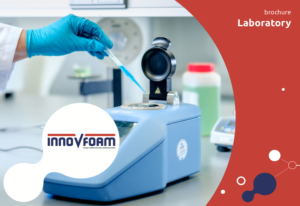Laboratory
Are you looking for a partner that can ensure the effective operation of your extinguishing foam system by testing the quality of the foam concentrate? We are happy to help you analyse your foam concentrate!
What you can expect?
The quality of foam concentrates in permanently installed fire extinguishing systems has to be tested once a year. In our laboratory, our technicians evaluate the quality of every brand and type of foam concentrate according to applicable standards such as EN1568, IMO1312, NFPA11, MSC/Circ.670.
We archive all of the analyses, compiling a file for each of our customers. This allows us to check whether the foam quality has remained consistent. As a result, we are able to identify any deviations at an early stage and advise you on the next steps that need to be taken. In addition to the standard foam sample analyses, the following analyses also rank among our range of options:
- Foam proportioning test at the lab level
- Small scale / large scale fire tests
- PFAS/PFOA analyses
The lead time is usually a maximum of 1 working week, but an urgent analysis within 1 working day is also possible.
MORE THAN FOAM
Laboratory
Are you looking for a partner that can ensure the effective operation of your extinguishing foam system by testing the quality of the foam concentrate? We are happy to help you analyse your foam concentrate!
What you can expect?
The quality of foam concentrates in permanently installed fire extinguishing systems has to be tested once a year. In our laboratory, our technicians evaluate the quality of every brand and type of foam concentrate according to applicable standards such as EN1568, IMO1312, NFPA11, MSC/Circ.670.
We archive all of the analyses, compiling a file for each of our customers. This allows us to check whether the foam quality has remained consistent. As a result, we are able to identify any deviations at an early stage and advise you on the next steps that need to be taken. In addition to the standard foam sample analyses, the following analyses also rank among our range of options:
- Foam proportioning test at the lab level
- Small scale / large scale fire tests
- PFAS/PFOA analyses
The lead time is usually a maximum of 1 working week, but an urgent analysis within 1 working day is also possible.
MORE THAN FOAM
Our services
Through the use of calibrated equipment, the following physical properties are analysed:
Supply of foam samples
Our service engineers can take a foam sample while performing maintenance on your extinguishing foam system, but it is also possible for you to send us your foam concentrate yourself. In order to perform a high quality analysis, the following is needed for each analysis:
If you are supplying the sample yourself, please use a clean, hermetically sealed bottle and include the company name and location as well as the type of foam.
| Analyse | Required |
|---|---|
| Foam quality analysis | 1 litre of foam concentrate |
| Proportioning test | 0.5 litre water/foam mixture (pre-mixed) 1 litre of the water used to make the mixture 1 litre of foam concentrate |
| Small scale firetest | 2 litres of foam concentrate |
| Large scale firetest | 20 litres of foam concentrate |
| PFAS / PFOA analysis | 1 litre of foam concentrate |
